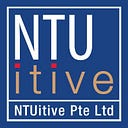As VB18 approaches the official six-month mark, we once again take a look back on one of our founding members — Peter, who is championing 2 projects. This week, the spotlight zooms in on his second project — “Virtual Asset Monitor”, which he spearheads with teammate Marcus.
In this post, Peter recounts the limitations faced so far, the solutions needed to solve his pain points, as well as the action plan for his project moving forward.

Peter introduces his project as Virtual Asset Monitor (VAM). The vision for VAM is for it to be the go-to provider for reliable risk assessment tools and technologies to detect exploitation of virtual assets (VAs) for money laundering and terrorist financing (ML/TF).
This project was originally entitled “Financial Fraud”, and the original broad idea was to provide cybersecurity analytics for virtual asset service providers (VASPs), comprising of open source intelligence (OSINT) combined with artificial intelligence (AI) algorithms focused on cyber-attacks and cyber fraud with new financial service providers.
The confluence of law enforcement, cybersecurity and financial regulatory compliance is a burgeoning estuary space for innovative solutions. Nonetheless, it has been tricky crafting the right problem statement and value proposition.
We have since narrowed our focus to investigative attribution tooling that provides context and correlation analysis to VA addresses, based on OSINT and in particular, dark web intelligence.
He also elucidates the current limitations placed on blockchain analytics providers (BAPs).
Currently, BAPs lack a comprehensive understanding of dark web activities. Law enforcement agencies, regulators, Interpol, VASPs, banks & other financial institutions also lack reliable risk assessment tools and technologies to detect suspicious activities in VA use for ML/TF.

The result of addressing these limitations gave rise to VAM. VAM adopts an AI-enabled Intelligent Retrieval Engine that combines knowledge management and cognition to automate data extraction from unstructured reports.
Peter felt the most crucial aspect was to keep tabs on the market landscape through continuous monitoring of potential competitor and related company outcomes, to deepen understanding of market needs and yield strategic insights and questions. He consolidates his thoughts using a metaphor of the Anableps fish.
The mangrove fish Anableps is a useful metaphor of this mindset. Its eyes are divided into two parts, one part looking out of the water, and the other underwater. This “four-eyed fish” reminds us that we cannot be pulled too far in either direction if we are not to mistake the wood for the trees, i.e. be so consumed by our operating environment that we fail to notice what is important or deficient about this environment as a whole.
For Peter’s full detailed recount of VAM’s origins, challenges and aspirations for the future, do give his full post a read here.


VB18 would like to wish all our cohort mates continued resilience and tenacity as we fight on for our entrepreneurial dreams. Until next week!
